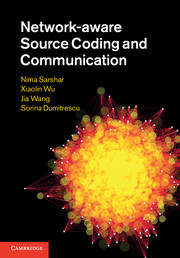2 - Lossless multicast with a single source
from Part I - The lossless scenario
Published online by Cambridge University Press: 07 October 2011
Summary
We start by perhaps the simplest variation of the NASCC problem, namely that of lossless information multicast. This problem has been the source of much interest and studies in the past several years, as ignited by the original work on network coding [8]. We are not going to review the large and exciting body of work on lossless multicast in this book in great detail. However, we will review some of the basic concepts in order to put this book in a proper historical and comparative context. We refer the reader to an array of excellent new books on network coding for further reading [57, 58].
Network coding, the multicast scenario
In the notations of this book, the network information flow problem introduced by Ahlswede et al. in [8] can be defined, for the case of a single information source, with the following elements.
A directed graph G〈V, E〉 with node set V and edge set E ⊂ V × V.
A function R : E → ℝ+ that assigns a capacity R(e) to each link e ∈ E.
An information source I that generates information at a server node s ∈ S at a rate h bits per time unit.
A set of sink nodes T ⊆ V that are interested in receiving this information.
The multicast demand h is said to be admissible with capacity constraint function R, or equivalently (G, S, T, R, h) is said to be admissible if there exists a coding scheme that satisfies the multicast requirement rate h and respects the capacity constraints on all links e ∈ E.
- Type
- Chapter
- Information
- Network-aware Source Coding and Communication , pp. 15 - 19Publisher: Cambridge University PressPrint publication year: 2011



